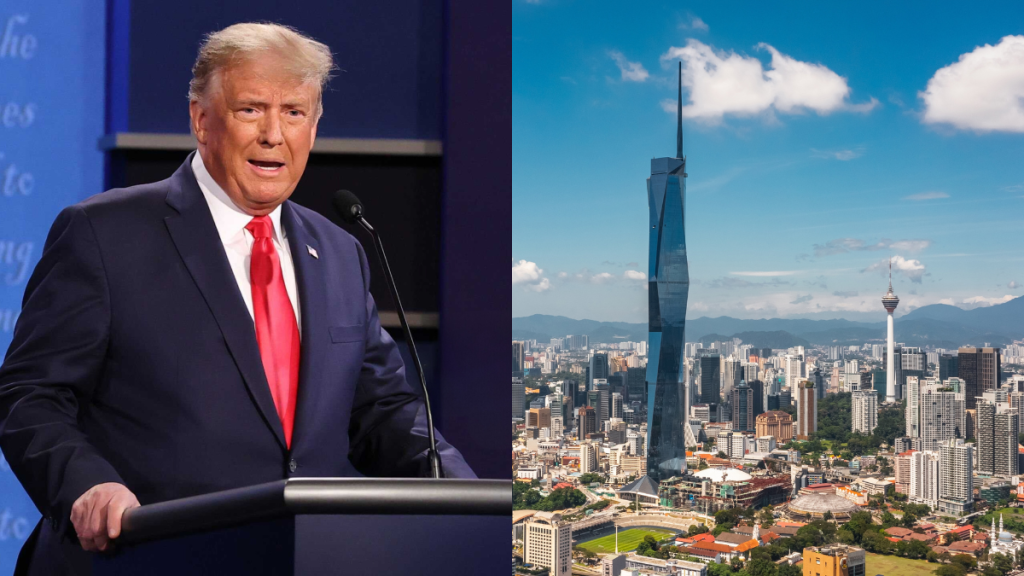On April 2, 2025, US President Donald Trump announced sweeping tariffs on its trading partners.
Starting April 6, a universal 10% tariff would be imposed on all goods coming into the US from anywhere in the world.
Adding to that, Trump also announced “reciprocal” tariff rates for over 60 countries, apparently targeting countries with which the US has the largest trade deficits.
As shown, Cambodia was imposed with the highest tariff rate, at 49%.
Other standouts within the Southeast Asia region include Laos, being imposed a 48% tariff, Vietnam at 46%, Myanmar at 44%, Thailand at 36%, Indonesia at 32%, Malaysia at 24%, and the Philippines at 17%.
Singapore was not imposed with a reciprocal tariff rate and will instead take on the universal rate of 10%.
As a result of the tariffs, Malaysian stocks fell on Thursday amid an Asia-wide market decline.
But what does this mean for businesses?
To directly quote BBC’s Jennifer Clarke:
- Tariffs are taxes charged on goods imported from other countries.
- Typically, tariffs are a percentage of a product’s value. For example, a 25% tariff on a US$10 (£7.76) product would mean an additional US$2.50 charge.
- Companies that bring the foreign goods into the country have to pay the tax to the government.
- Firms can choose to pass on some or all of the cost to customers.
As such, companies, even small businesses, exporting goods or materials to the US from Malaysia would now be imposed with a 24% tax.
Let’s say your small business sells jewellery to a global consumer base, and you received an order from the US for 10 necklaces, totaling US$100.
With the 24% tariffs in place, the price would climb to US$124, a US$24 increase which would likely have to be covered by the customer (unless you’re feeling generous, of course). And that’s not even including the shipping costs and other potential fees or markups.
As such, this could indirectly lead to a preference for local goods among Americans.
This higher rate however does not cover all Malaysian goods exported to the US, with gloves and semiconductors among goods that have been exempted from the 24% tariff.
What the experts say
Talking to PBS associate professor Dr. Ida Yasin, the economist told Vulcan Post that the increased tariffs on China could also impact the Malaysian cost of living indirectly.
“For example, say there is a factory in the US buying raw materials from China, to then sell their finished goods to Malaysian customers. These Malaysian customers would then incur a higher cost than before due to the higher tariff rate of 54% now imposed on China by the US.”
“This especially affects Malaysians who prefer products sourced from the US.”
Dr. Ida added that she strongly believes that manufacturers from other parts of the country might relocate to Johor Bahru or even Singapore to take advantage of the lower 10% tariff on Singapore, that is if this policy continues.

In a statement by the Labour Solidarity and Learning Resource Association (LLRC), the group expressed concern that the move of factories or manufacturing companies to other countries with lower tariffs could lead to “tens of thousands of workers in Malaysia being terminated.”
Ida continued, “It’s just temporary I would say. This policy would affect the average American or even business owners more than it does non-US businesses, as it is likely that they would be the ones to incur these additional costs.”
“In the short term, Malaysians would definitely be negatively impacted as the US is one of the primary export destinations.”
“That said, if these tariffs continue in the long term, Malaysia is bound to explore new markets and different trading partners.”
What some local businesses say
Speaking to John, the founder of Goblintechkeys, however, he expressed that his business proceedings and strategy would “surely be affected,” with a foreseen additional charge of 9-14% for US customers.
We hope that [the tariffs] won’t last, but compared to other huge export countries like China and other ASEAN countries, I think we are considered ok.
We are, however, exploring to focus on other countries instead of just focusing on the US. Whether you like it or not, we business owners need to find ways to adapt to it, either by reducing our [profit margin] or by selling something that provides value.
– John, founder of Goblintechkeys
Indeed, even for semiconductor company LR Technology, strategies are being implemented to diversify their business by trading with different markets, despite semiconductors being exempted from the new tariff rates.
We are eyeing more business from Europe this year and by collaborating with our German counterparts, we are trying to explore the Chinese market.
This is crucial when the whole world is affected by US tariffs. Large blocs like the EU and China will have to react and switch focus to other areas to minimise the impact.
– LR Technology Managing Director, HS Toh
Texas-based robotics company, Dallas Roboter, is also another business significantly affected by the tariffs, with its engineering centre based in Cyberjaya.
The tariffs primarily affect sectors like electronics, textiles, and rubber-based products, which are crucial for the machinery and robotics industry. This will potentially make our products less competitive in the American market.
– Dallas Roboter Director of Internal Operations, Racheal Choo
But the Dallas Roboter team remains hopeful about the situation, with Racheal saying, “Given the dynamic changes in trade relations, these policies might change depending on how other countries respond and comply with US demands.”
“We’re surprised to see Malaysia high on the US tariff list, and to mitigate the impact of these tariffs, our government must actively engage with US authorities and assess whether it’s advantageous to maintain this tariff protection.”
In a statement by the Ministry of Investment, Trade, and Industry (MITI), they said that the MADANI government would continue engaging with the US, leveraging on the Malaysia-US Trade & Investment Framework Agreement (TIFA).
MITI and relevant Ministries will continue to engage with the industry and exporters for all of us to weather through this testing period based on a whole-of nation approach, and with a view to support impacted industry sectors to mitigate the impact of the tariffs.
Featured Image Credit: Images used under licence from Shutterstock










